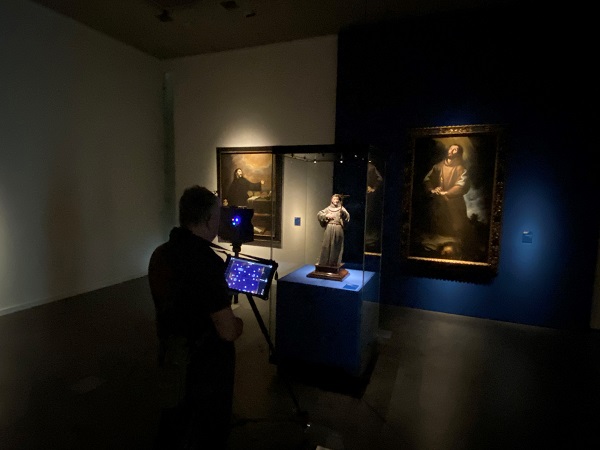 De Mena, Murillo, Zurbarán 3D exhibition;
Credit: MNHA
De Mena, Murillo, Zurbarán 3D exhibition;
Credit: MNHA
Luxembourg's National Museum of History and Art (MNHA) has announced that it is now offering 3D tours of its temporary exhibitions to keep people occupied during the current lockdown.
With the public forced to stay at home during the current state of emergency, the MNHA has decided to allow everyone free and secure access to its temporary exhibitions. Anyone wishing to explore the temporary exhibition "De Mena, Murillo, Zurbarán - Masters of Spanish Baroque" virtually can now do so from home by logging into the website www.mnha.lu. There is a free immersive tour of the building and its thematic routes, which has long been available on the museum's web portal.
MNHA Director Michel Polfer explained: "Government directives to curb the progression of the pandemic affects us all and the cultural sector is not spared: faced with such an unprecedented health crisis, it is our responsibility to provide support on our modest scale, and to answer it with an equally unprecedented offer".
Mr Polfer continued: "Thanks to cutting-edge recordings initiated this week in our establishment by a specialised Luxembourg company using 3D VR technology, we are able not only to offer the general public virtual access to our temporary exhibitions such as the one on the 17th century Spanish baroque art or that celebrating one hundred years of universal suffrage, but also to showcase a photographic exhibition, the editing of which is finalised but whose opening was prevented. Indeed, last week, the MNHA was unable to inaugurate the photographic exhibition "Brushed by Light" by Carla van de Puttelaar, which will nevertheless be accessible virtually soon".
3D VR recordings are still in progress: the first virtually accessible exhibition on the MNHA website will be "De Mena, Murillo, Zurbarán". The two other exhibitions, Carla van de Puttelaar's "Brushed by Light" and "#wielewatmirsinn - 100 years of universal suffrage", will follow.
The 3D models of the MNHA are also available on smartphones and tablets and can still be explored in virtual reality using VR-goggles glasses from Google Cardboard and Occulus Gear VR.








